16 Different Types of Citrus Trees (with Pictures)
-

- Last updated:
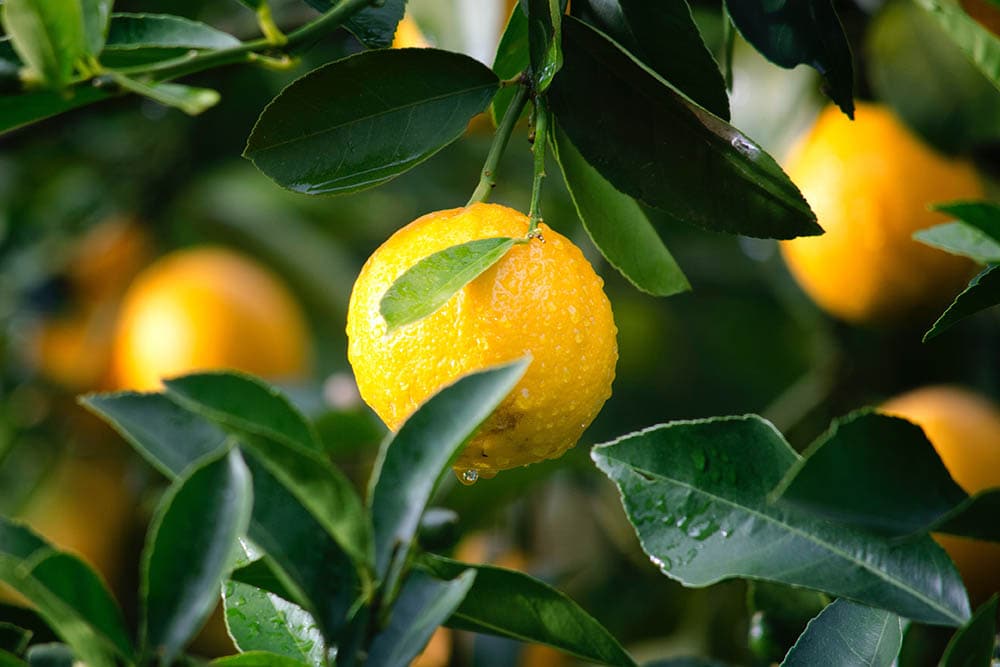
Most of us are familiar with common citrus trees, like Orange and Lemon. However, it might surprise you to learn how many different varieties there are. If this is a subject of interest to you, keep reading as we provide you with a list of several trees with facts about each one.

The 16 Types of Citrus Trees
1. Bitter Orange
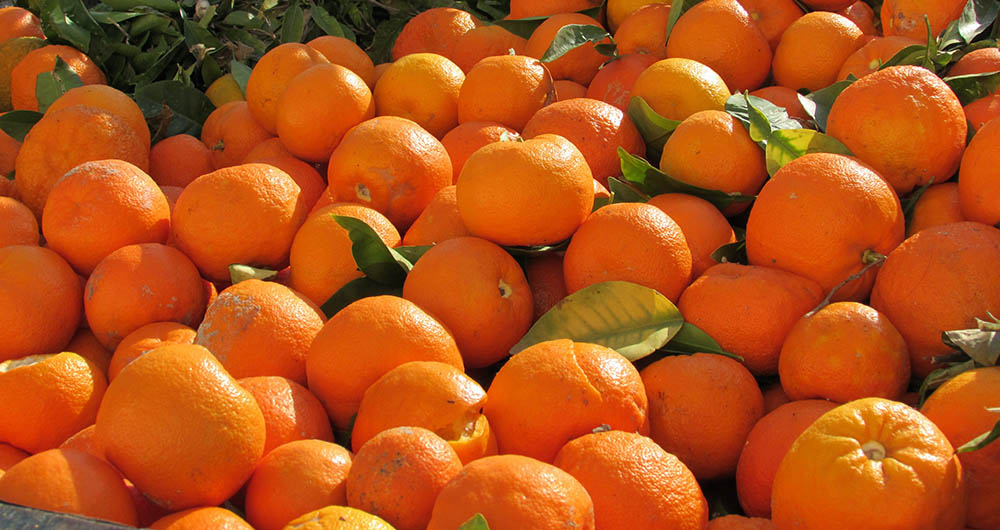
| Growing Zones: | 9–11 |
| Height: | 8–30 feet |
The Bitter Orange is a great ornamental tree that also produces edible fruit. It’s native to Asia and prefers growing zones 9 to 11, so without climate control, you will only find them in the most southern areas in the United States and California. These trees vary in size but can get up to 30 feet tall, and they prefer well-drained, loamy soil.
2. Blood Orange
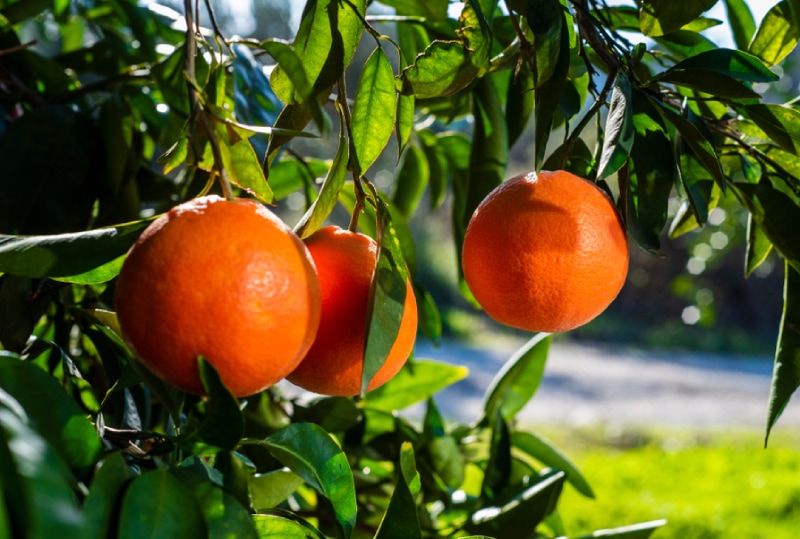
| Growing Zones: | 9–11 |
| Height: | 25 feet |
The Blood Orange tree produces tasty oranges with dark-red insides, giving them their name. They can grow up to 25 feet tall and prefer 10 and 11 growing zones. Many people succeed in growing zone 9, but they often need winter protection.
3. Calamondin
| Growing Zones: | 9–11 |
| Height: | 6–15 feet |
The Calamondin came to the United States around 1900, and it is used primarily as an ornamental tree because the flowers and fruit often appear simultaneously, creating quite a spectacle. The tree rarely grows larger than 15 feet. Many people use the fruit to make refreshing beverages or as an ingredient in sauces.
4. Citron
| Growing Zones: | 10–11 |
| Height: | 10–15 feet |
Citron is an ancient tree that is an ancestor to several modern varieties. It makes a fragrant fruit with a thick rind that tastes great and is an important ingredient in many soft drinks and desserts. Ancient doctors also used it to combat seasickness, scurvy, and other ailments. It’s easy to fit these trees into a garden because they rarely grow more than 15 feet tall, but they do prefer a hot environment.
5. Grapefruit

| Growing Zones: | 9–11 |
| Height: | 10–45 feet |
The Grapefruit tree is one of the largest varieties on this list, often reaching as tall as 45 feet. It produces great-tasting fruit and is more forgiving of cooler temperatures than most other citrus trees. It requires frequent feeding and plenty of water to produce the largest harvest.
6. Persian Lime
| Growing Zones: | 9–11 |
| Height: | 15–20 feet |
The Persian Lime tree appeared in California in 1875, but its exact origin is unknown. Its small size makes it a great choice for the home landscape, and it can even grow indoors as long as it can receive at least 10 hours of sunlight per day. The fruit is tasty and seedless, and it’s a popular ingredient in drinks.
7. Key Lime
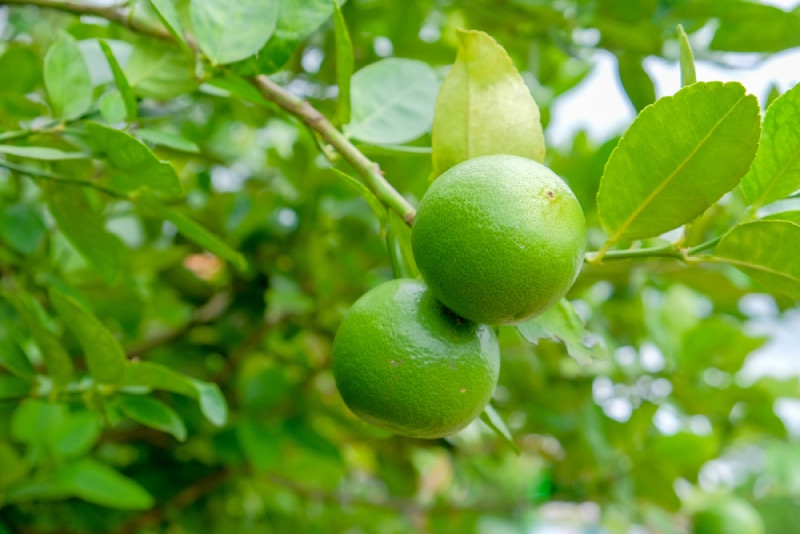
| Growing Zones: | 9–10 |
| Height: | 10–12 feet |
The Key Lime is a small shrubby tree with thorns on its branches. Instead of a single trunk, it grows from several branches. It has large fragrant flowers that can bloom any time of the year, and the fruit appears 9 months later. It produces larger harvests every year, and it’s quite hardy as long as it receives plenty of sunlight.
8. Kumquat
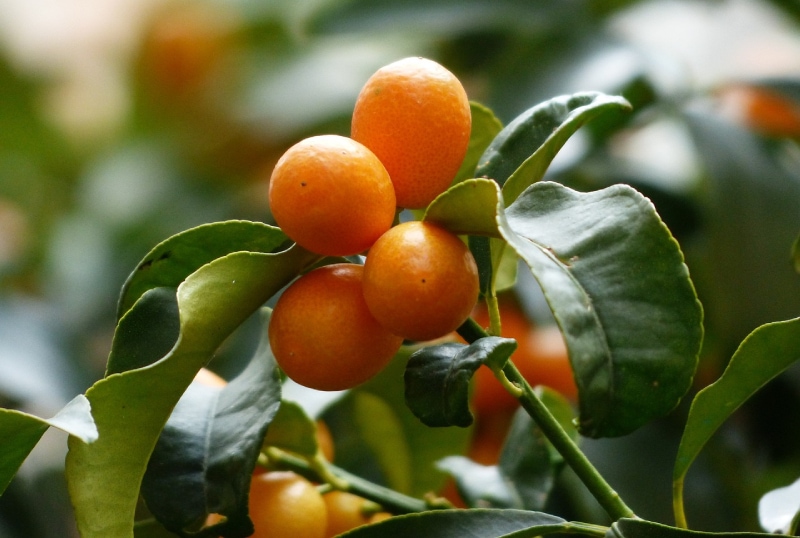
| Growing Zones: | 9–11 |
| Height: | 4–14 feet |
The Kumquat was once a citrus tree until it was reclassified in 1915 into its own adjacent category, and it is the parent breed of many other fruits, like the Orangequat. It’s easy to grow, looks attractive, and produces tasty fruit that makes great pies. It varies in size but is usually about 8 feet tall and has a good tolerance for cold weather.
9. Lemon
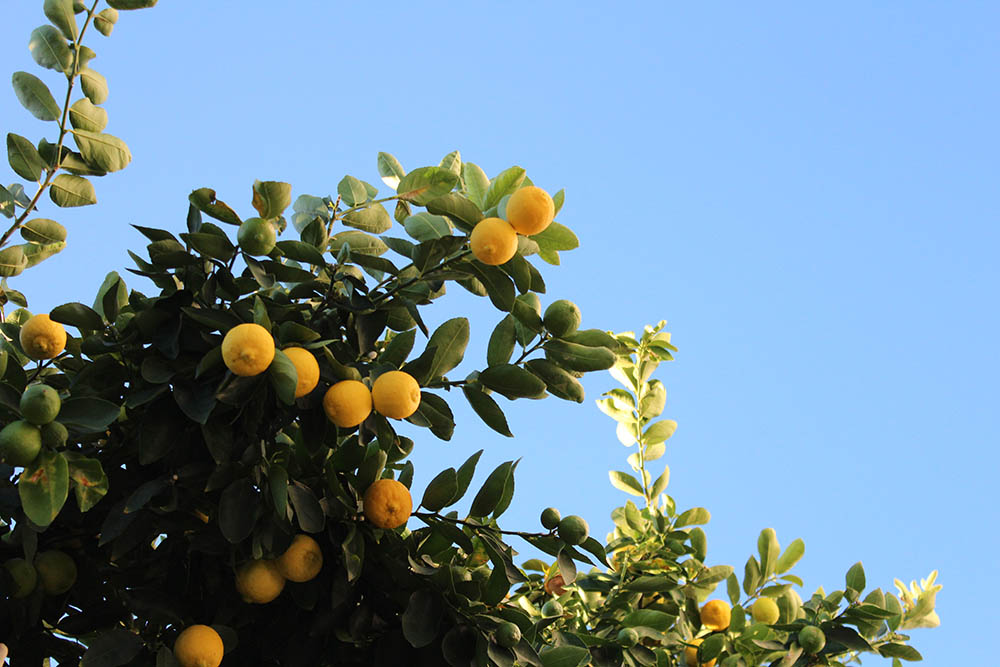
| Growing Zones: | 9–11 |
| Height: | 10–30 feet |
The Lemon tree is one of the most popular types of citrus trees. It’s an evergreen with sparse oval leaves. The flowers are white with pink highlights, and the fruit is yellow. It’s easy to grow and produces a large harvest, but it’s extremely sensitive to cold weather, so you will need to protect it from frost and provide it with plenty of direct sunlight.
10. Orange
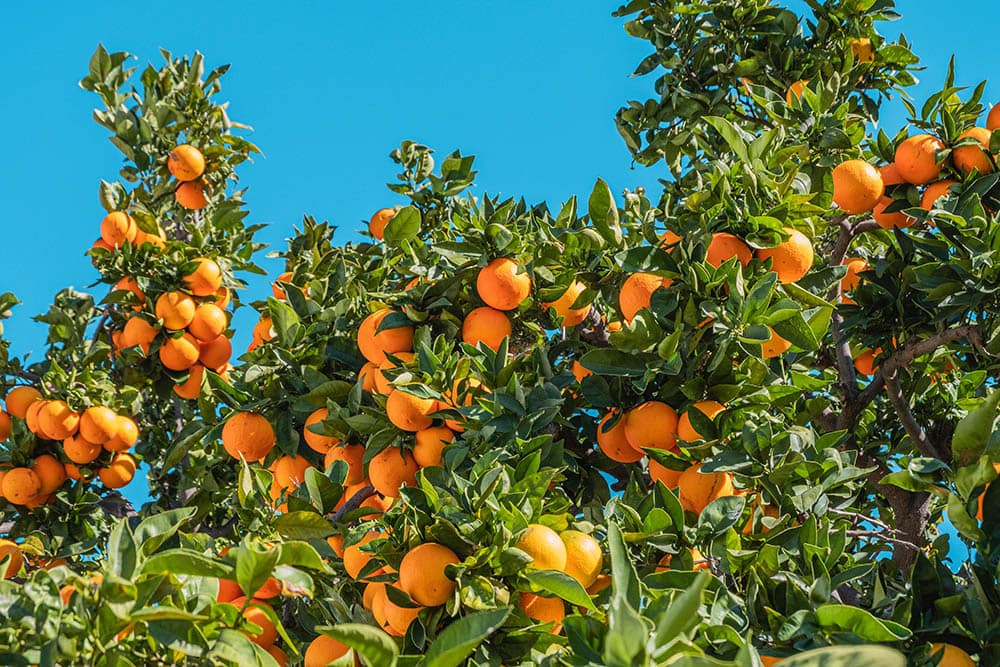
| Growing Zones: | 9–11 |
| Height: | 25 feet |
The Orange is a hugely popular citrus tree that produces the great-tasting orange fruit, which you can eat raw or drink in a beverage. Oranges can grow from seed, but it can take more than 15 years to produce fruit, so most people use grafts to speed up the process. Grafted trees are also more resistant to the diseases that often affect new-growth trees, like foot and root rot.
11. Mandarin Orange

| Growing Zones: | 9–11 |
| Height: | 10–25 feet |
The Mandarin Orange is a small tree popular for its fruit that resembles a small orange. It’s quite tasty, and many people confuse it with the loosely related Tangerine. These trees are native to the Philippines and southeastern Asia, but you will also find them in Florida, Alabama, Mississippi, and a few other states.
12. Tangerine
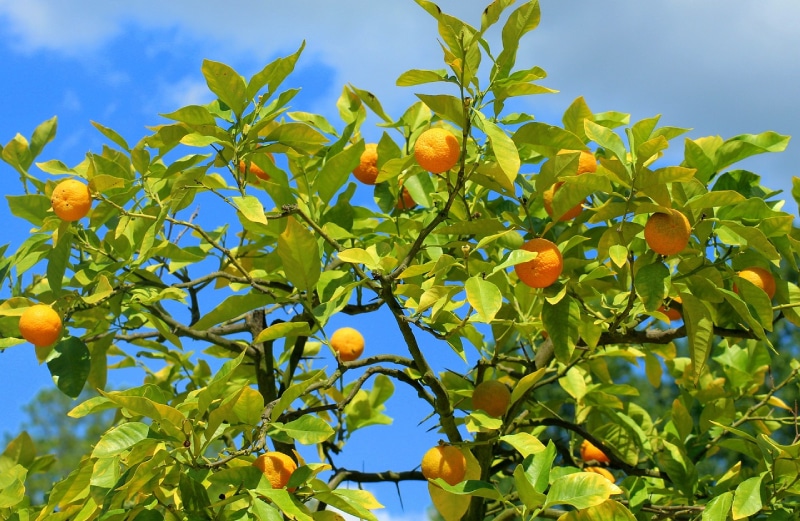
| Growing Zones: | 9–11 |
| Height: | 10–25 feet |
The Tangerine belongs to the same tree species as the Mandarin Orange, and many people use the names interchangeably. However, people usually call the variety with red-orange skin a Tangerine, with plain, orange-skinned fruits retaining the name Mandarin. These trees can get quite large but typically stay below 20 feet.
13. Pummelo

| Growing Zones: | 10–11 |
| Height: | 10–20 feet |
The Pummelo is a citrus tree that produces large, sweet fruit. It’s popular in Asia, where the rind is often candied and used in marmalade. It’s one of the original types of citrus trees, and it helped produce many of the fruits that we have today, including the popular Grapefruit.
14. Tangelo
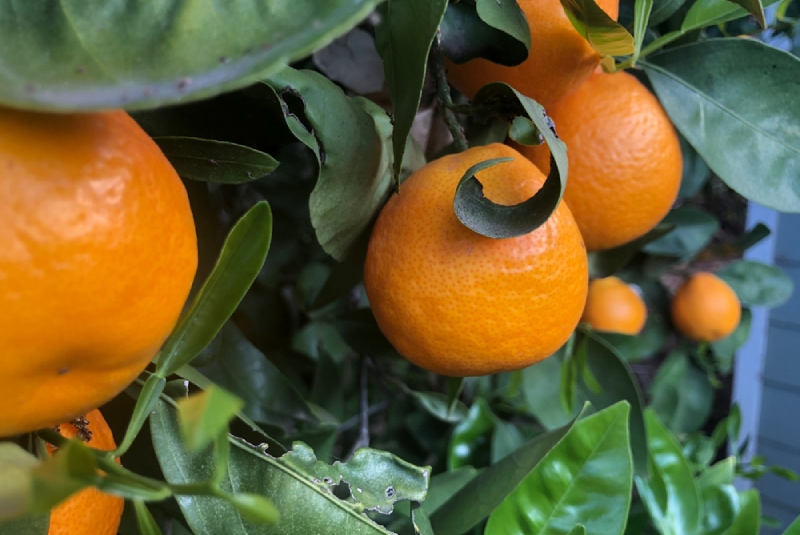
| Growing Zones: | 10–11 |
| Height: | 10–25 feet |
Tangelo trees are popular trees that can get quite large and withstand colder temperatures than Grapefruit trees, so they’re easier to grow in some parts of the country. The fruit looks like an orange but has a bulbous stem end, giving it a unique appearance. The fruit is sweet and aromatic with an easy-to-remove rind.
15. Ugli
| Growing Zones: | 8–10 |
| Height: | 15–20 feet |
The Ugli tree is a registered brand name of a Jamaican Tangelo tree that crosses Bitter Orange, Grapefruit, and Tangerine trees to make fruit with a wrinkled green skin that gives it its name. The fruit is sweet but tart due to its Grapefruit ancestry, and gardeners must graft all new trees to ensure that the fruit remains true. Growing it from seed might cause it to revert to one of the other citrus varieties.
16. Yuzu
| Growing Zones: | 7–11 |
| Height: | 8–12 feet |
Yuzu trees are popular because of their fruit’s oily fragrant rind that creates an important ingredient in Asian cuisine. The fruit is rarely eaten, but the trees are quite ornamental and resist cold better than many other varieties, making them easier to grow. Their small size also makes them ideal when space is limited.

Conclusion
There are several citrus trees besides the common Lemon, Orange, and Grapefruit trees, and many produce great-tasting fruit. The flowers are often ornamental and fragrant, so they will improve your landscape. The downside is that most varieties require hot weather and plenty of sunshine, so they are difficult to grow in all but the most southern states of America. However, you can grow a few varieties, like the Kumquat, Calamondin, and Key Lime, in your home if you can provide them with plenty of sunlight.
-
Related Read: The 15 Different Types of Lime
Featured Image Credit: Ryan Baker, Pexels
Contents
